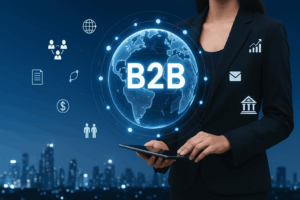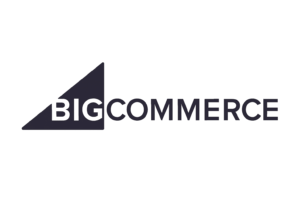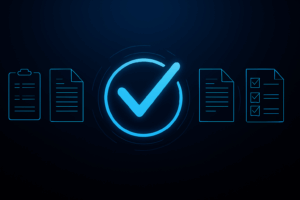The B2B Subscription Opportunity That’s Being Wasted
Subscriptions aren’t just for razors and protein powder anymore. In the industrial world, they’ve become mission-critical systems, powering everything from replenishment of safety supplies to scheduled delivery of chemical drums or MRO parts. But here’s the problem: most B2B suppliers still treat subscriptions like consumer boxes. Rigid. Hidden. Unintuitive.
When an industrial buyer signs up for a recurring delivery, they’re not doing it for convenience. They’re doing it to protect uptime, avoid stockouts, and stabilize their operations. And if they can’t adjust the cadence, quantities, or shipping destinations based on real-world usage, the system quickly becomes more of a liability than a solution.
On Shopify or BigCommerce, native subscription tools are designed for one-size-fits-all ecommerce. But B2B needs are messier. Buyers want control, procurement needs visibility, and your support team doesn’t want to babysit every change request. That’s where most platforms fall short, and where a custom subscription portal becomes a competitive advantage.
In this article, we’ll show you exactly how to build that advantage on BigCommerce, without replatforming. You’ll see the architecture behind a flexible, secure, and buyer-friendly subscription experience. You’ll understand why plug-and-play apps don’t cut it for industrial workflows. And you’ll get a roadmap to build a system that empowers your customers while freeing your internal team.
Because in B2B, the brands that win aren’t the ones with the cheapest SKUs. They’re the ones that make reordering feel like second nature.
The Real Problem: B2B Subscriptions Aren’t Built for Change
Most B2B subscription models break the moment something needs to change.
Think about your average industrial buyer. They’re not just setting a monthly order for gloves and forgetting about it. They’re responding to demand spikes, safety audits, seasonality, and job-site turnover. They might need to double an order one week, skip the next, or ship to a different plant with two days’ notice.
And what happens when your BigCommerce store is running a rigid subscription app that doesn’t support those adjustments?
They call your support team. They email someone in sales. They cancel the subscription entirely and start over. You lose operational efficiency. They lose trust. And the whole point of offering subscriptions, to create stability and predictability, goes out the window.
Procurement managers need a portal that gives them real control. Not just the ability to pause or cancel, but tools to:
- Update quantities in real time.
- Change frequency or skip shipments.
- Allocate items to different locations or cost centers.
- View upcoming deliveries and make proactive edits.
Without this flexibility, your “subscription” system is just a recurring invoice with no intelligence behind it. And for high-value B2B customers, that’s not good enough.
Even worse, most off-the-shelf subscription solutions treat every customer the same. No role-based permissions. No purchasing workflows. No integration with ERP systems or approval routing. Just a front-end checkbox and a payment gateway.
In a world where your customer base includes everyone from site foremen to procurement analysts to CFOs, that kind of limitation isn’t just frustrating, it’s a dealbreaker.
That’s why the smartest industrial suppliers are ditching cookie-cutter setups and building subscription portals tailored to how their buyers actually operate.
What B2B Buyers Want—and What Subscription Business Models Are Missing
B2B buyers don’t just want convenience, they want control, visibility, and trust.
In the industrial space, a subscription isn’t a consumer impulse. It’s an operational commitment. The person setting it up is accountable for real business purposes, like maintaining uptime, managing inventory, and ensuring regulatory compliance. They can’t afford surprises. And they don’t want to rely on someone else to make changes; they should be able to manage themselves.
This is where most systems fall short.
A true B2B subscription experience doesn’t start with a “subscribe” button. It starts with a dashboard. One that gives the buyer clarity into what’s shipping, when, where, and why. One that aligns with the way industrial teams buy: collaboratively, with roles, hierarchies, and site-level nuances.
Here’s what that looks like in practice:
A procurement manager at a regional construction firm logs into your BigCommerce portal. She sees all active subscriptions by project site, complete with next shipment dates, current inventory levels (if synced), and open PO numbers. She clicks into one subscription, weekly delivery of epoxy sealant, and updates the quantity based on a change order her team received that morning. Then she routes the adjustment for approval by her supervisor.
That’s not a fantasy. That’s what modern B2B buyers expect. And if you’re not offering it, you’re training them to look elsewhere.
They also want transparency. They want to know how much inventory you have. They want real-time pricing visibility, including volume discounts and contract terms. They want shipment tracking without calling your warehouse. They want email notifications that don’t just say “Order Confirmed,” but explain what’s happening and when to expect delivery.
And above all, they want fail-safes. If a shipment is delayed or inventory is low, they want alerts, not excuses. They want the option to adjust or reroute. They want logic that protects them from ordering errors or duplicate shipments.
This is no longer a luxury. It’s the new baseline.
If your subscription experience doesn’t support how they work, they’ll shift their orders to other business partners who offer more control and less friction. And in B2B, switching costs aren’t as high as you think, especially when a competitor shows up with a portal that just works.
Why BigCommerce Doesn’t Do This Out of the Box
BigCommerce is a powerful platform, especially for B2B brands that need native support for price lists, customer groups, and API extensibility. But when it comes to subscription management, it wasn’t built for industrial buying cycles. At least, not without serious augmentation.
Out of the box, BigCommerce offers basic recurring order functionality through integrations with third-party apps like ReCharge or Ordergroove. These are perfectly fine for simple monthly replenishment models, especially in DTC. But for B2B buyers managing multi-site procurement with dynamic reorder logic, they fall apart fast.
Why?
Because these apps don’t support the operational logic your buyers need. There’s no native concept of multi-user accounts with role-based permissions. No visibility into order history filtered by job site, department, or subscription group. No ability to tie recurring orders to cost centers or internal POs, and absolutely no built-in connection to your ERP’s real-time inventory, pricing, or approval workflows.
Let’s say a facilities manager wants to update a weekly order of degreasing solvents. In a typical BigCommerce subscription app, they’re lucky if they can even find the subscription settings, let alone adjust the ship-to location, change the quantity for a one-time spike, or flag a change for supervisor approval. Most likely, they’ll end up canceling the subscription and creating a new order manually. Again.
Now multiply that across hundreds of customers and dozens of recurring SKUs. What should be a streamlined process becomes a support nightmare and a bottleneck for sales.
The limitations aren’t just frontend, either. On the backend, BigCommerce’s architecture wasn’t designed to trigger fulfillment logic based on time-bound subscription schedules, nor to reconcile those orders cleanly with ERP inventory allocation and billing systems. That means even if you hack together a frontend workaround, operations still suffer.
The result is a system that looks fine to the casual eye but fails under the weight of real B2B demand.
That’s why leading industrial suppliers are turning to custom solutions that work with BigCommerce, not against it. Portals that use the platform’s open APIs to orchestrate subscriptions the way their customers expect. Systems that build on top of BigCommerce’s strengths but bypass its rigidities.
What a Self-Service Subscription Portal Looks Like
Picture this: a centralized control center where your B2B customers manage the complexity of their recurring orders. No PDF forms. No “contact us to change your subscription” links. Just clarity, precision, and authority, on their terms.
A self-service subscription portal for industrial buyers should feel less like an e-commerce checkout and more like a procurement command center. It’s not just about changing a delivery date, it’s about managing commitments at scale.
Here’s how it works from a buyer’s perspective.
They log into your BigCommerce storefront and immediately see a dashboard of active subscriptions, organized by facility, job site, or account group, depending on how their company is structured. Each subscription line item includes product name, frequency, current quantity, next shipment date, price (including negotiated rates), status, and available payment options—whether that’s card, invoice, or on-account terms.
If they need to make changes, the interface makes it easy. They can:
- Adjust quantities for one or all upcoming shipments.
- Skip a shipment, pause temporarily, or change frequency.
- Reassign the delivery location from one warehouse or job site to another.
- Add a PO number or internal job code for tracking and approval.
- Trigger a review process if company policy requires it—say, for changes above a dollar threshold or outside standard delivery windows.
And they can do all this without needing to submit a ticket, make a phone call, or break the flow of work.
Under the hood, this isn’t just cosmetic. The portal syncs directly with your backend systems, your ERP for inventory, your CRM for account permissions, and your WMS for fulfillment logic. It honors real-world rules: maybe a certain chemical can’t ship to a given state, or maybe a buyer is restricted from editing a contract-based subscription. The portal enforces those boundaries automatically.
Support teams aren’t cut out, they’re elevated. Instead of chasing down “Can I get this delivered two days earlier?” emails, they’re focused on strategic accounts, exception handling, and proactive outreach.
The result is not just happier customers. It’s a radically more efficient operation. Subscriptions become self-sustaining. Errors drop. Order processing time shrinks. And trust increases, because buyers know they can depend on your system, not just your people.
This is what modern B2B subscription management looks like: powerful, transparent, and built to mirror how industrial buyers actually operate.
Core Features Your Portal Needs to Include
Building a self-service portal isn’t about slapping a dashboard on top of BigCommerce and calling it a day. It’s about architecting the right infrastructure, flexible enough to match complex industrial buying behaviors, but structured enough to maintain operational integrity.
The most effective portals don’t overload buyers with options. They provide just enough control, visibility, and flexibility to make subscription management seamless and mistake-proof. Every feature exists to remove friction from procurement to fulfillment to accounting.
Here’s what your portal must deliver:
1. Role-Based Access and Permissions
Not every user needs the same level of access. A site supervisor may need visibility but not editing rights. A procurement manager may be able to create and modify subscriptions, but require finance approval before an order goes live. Your portal needs to support layered roles and permission structures that map to real B2B workflows, not just “admin” and “user.”
2. Editable Schedules with Rule-Based Guardrails
Buyers should be able to pause, skip, or reschedule shipments, but within constraints you define. For example, you might limit how far in advance a change can be made, require approvals for quantity spikes over a certain threshold, or restrict frequency edits on contract-locked items. The portal should surface flexibility, but behind the scenes, it’s enforcing business logic.
3. Multi-Location Delivery Management
B2B buyers often manage inventory across job sites, plants, or warehouses. Your portal should allow subscriptions to be allocated per location, with unique delivery instructions, POs, and account codes for each. This is non-negotiable in construction, energy, agriculture, and other field-based industries.
4. ERP Integration and Real-Time Inventory Awareness
When a buyer adjusts their subscription, your ERP needs to know immediately. Whether it’s inventory reservation, pricing validation, or just accurate forecasting, the portal must sync tightly with your backend systems. And from the buyer’s view, they should see accurate, real-time stock levels, not static assumptions.
5. Transaction and History Logs
Buyers need traceability. Every change, what was edited, when, by whom, should be logged and exportable. This gives procurement teams audit clarity and makes your brand look like the reliable partner you are.
6. Communication Settings and Alerts
The portal should proactively notify users of key events: an upcoming shipment, a delayed order, a low-stock warning. Let buyers configure what alerts they receive and how, via email, SMS, or in-dashboard. This turns your subscription system from reactive to preventative.
7. Easy Reordering and Plan Duplication
Many buyers want to clone a plan they’ve used before. Whether they’re replicating a shipment to a new site or creating a backup schedule, your portal should make that easy. Reordering shouldn’t mean reconfiguring from scratch.
Each of these features represents a commitment to customer autonomy and opens the door to more innovation in how subscriptions are managed, optimized, and scaled. You’re not just offering subscriptions, you’re giving buyers operational command.
When you build around these features, your portal stops being a support stopgap and starts becoming a strategic asset.
How to Build a B2B Subscription Management Platform on BigCommerce
You don’t need to replatform to deliver a powerful B2B subscription experience, you need to reimagine the architecture around BigCommerce.
At its core, BigCommerce offers the flexibility and extensibility required to support a custom portal. But to achieve the level of control and automation industrial buyers demand, you’ll need to go beyond native functionality and build a layer above the platform.
It starts with an API-first mindset.
BigCommerce’s APIs allow you to interact with customer accounts, orders, products, pricing rules, and even custom data structures through metafields. This gives you the hooks necessary to create an external subscription management interface that’s fully branded, fully secure, and fully decoupled from the limitations of traditional checkout flows.
Here’s the foundation:
- Frontend Portal (Headless or Embedded)
Build your portal either as a standalone headless app (e.g., React or Vue.js) or as an embedded app within the BigCommerce storefront. This gives you complete control over UX without being constrained by theme limitations. The frontend pulls data via APIs and renders subscription details, editable forms, and actionable options based on the customer’s profile and permissions. - Subscription Engine Logic (External Layer)
You’ll need a logic layer that handles subscription rules, schedule triggers, validations, and coordination with fulfillment. This can be custom middleware or a serverless backend (e.g., AWS Lambda) designed to manage subscription state, queue upcoming orders, and trigger changes. This logic also determines which updates are allowed, when orders should be generated, and how inventory needs to be checked or reserved. - ERP and Inventory Sync (Two-Way Integration)
For subscriptions to reflect real-world availability, pricing, and fulfillment status, your ERP must be connected. Use middleware (such as Celigo, Patchworks, or a custom integration layer) to sync key data, SKU availability, pricing tiers, account details, POs, and shipment tracking between BigCommerce and your internal systems. - Custom Customer Dashboard
This is where the portal lives. Pull data from BigCommerce and your backend systems into a single, intuitive view. Let customers filter subscriptions by site, product type, or delivery date. Include embedded controls for editing, pausing, rescheduling, and cloning plans, wrapped in role-based logic that controls who can take what action. - Scheduled Order Injection
When it’s time for a subscription to trigger a new order, your system should inject it into BigCommerce via the Orders API, preconfigured with the right shipping address, payment terms, pricing, and PO data. This maintains a single source of truth for transactions and preserves your BigCommerce analytics and reporting continuity. - Alerting and Notifications
Integrate with tools like Klaviyo, Postmark, or your ERP’s alerting system to deliver status updates and reminders. Automate emails for shipment confirmations, missed approvals, inventory conflicts, or paused subscriptions—keeping both buyers and internal teams in sync.
The beauty of this architecture is modularity.
You don’t have to rebuild your entire commerce stack. You can roll out the portal in phases, starting with core features like schedule visibility and editable quantities, then layering in deeper ERP sync, role controls, or audit logs as your customers adopt the system.
BigCommerce remains the transaction hub. Your custom portal becomes the control layer that gives B2B buyers the experience they’ve always wanted—but never had.
Rollout Strategy — How to Launch Without Breaking Ops
Rolling out a self-service subscription portal is an operational shift. If you launch too fast, you risk overwhelming your internal teams and confusing customers. If you delay too long, your competitors may deliver the experience your buyers are already craving.
The key is to treat this like a systems evolution, not a software deployment.
Start with a controlled pilot.
Identify a subset of accounts that are heavy subscription users, ideally, strategic customers who already have direct access to your team. Roll out the portal to them first. Gather feedback, monitor usage patterns, and fine-tune the logic. This phase lets you iron out edge cases without introducing chaos into your core business.
Mirror your existing workflows first, then improve them.
The portal doesn’t need to reinvent how buyers interact with you on Day 1. It should echo your current process, same shipping cadences, same PO structure, same contact points, only digitized and automated. Once adoption picks up and data flows stabilize, you can introduce new features like location-based fulfillment routing or inventory-triggered alerts.
Train your internal teams before you train the customer.
Customer success, sales, support, and fulfillment all need to understand what the portal does, how it works, and where it plugs into their daily responsibilities. Make the portal a tool they use, not a black box they fear. When internal teams are fluent, they’ll champion the experience to buyers.
Communicate value, not just functionality.
Don’t just tell customers, “You can now manage your subscriptions online.” Tell them they’ll save 6 emails a month, reduce order errors by 50%, and get shipments where they need them faster. Position the portal as an operational upgrade, not just a UI change. If they understand the gain, they’ll engage.
Prepare your integration stack for scale.
As more customers start making changes in real time, your ERP and warehouse management systems need to keep up. Ensure APIs are performance-tested and error-handling is tight. Create buffers or manual checkpoints for orders that fail automation, so your team can intervene without disruption.
Measure success on business outcomes, not feature usage.
The goal isn’t just “X customers logged in” or “Y subscriptions edited.” The goal is reduced support tickets, faster order processing, lower error rates, and higher customer retention. Tie adoption metrics to real outcomes. That’s how you justify the investment and drive continuous improvement.
With the right rollout, your portal doesn’t just become another tool. It becomes the centerpiece of a new operational model—one where customers are empowered, your teams are unburdened, and subscriptions become a growth engine rather than a support drain.
Suggested Success KPIs to Track:
| Metric | Goal | How to Measure |
| Portal adoption rate | 60%+ of pilot accounts in 30 days | # of active logins per account |
| Order accuracy | ↓ 50% order errors | Compare pre-/post-launch error rates |
| Ticket volume (order issues) | ↓ 30% support tickets | Zendesk / Freshdesk data |
| Time-to-ship | ↓ 1–2 days per order | Fulfillment system timestamps |
| Customer retention (pilot group) | +10% retention in 90 days | Subscription renewal % |
B2B Subscription Portals That Work
Purpose: Give your buyers full control of recurring orders—without breaking your ops team.
5 Must-Have Features Your Portal Needs
| Feature | Why It Matters |
| Editable Schedules | Let buyers adjust quantities, frequency, and skip shipments on demand. |
| Role-Based Permissions | Not everyone should have edit access—define roles by site, team, or PO limit. |
| Multi-Site Delivery Logic | Route subscriptions to different warehouses, plants, or job sites. |
| ERP + Inventory Sync | Ensure real-time pricing, stock levels, and fulfillment visibility. |
| Change Audit Trail | Track every edit: who did what, when, and why—for trust and compliance. |
5 KPIs That Show It’s Working
| Metric | Target |
| Order error rate | ↓ 50% from baseline |
| Support tickets (subscriptions) | ↓ 30% |
| Portal adoption rate (pilot) | > 60% in 30 days |
| Subscription renewal rate | +10% over 90 days |
| Time-to-ship | ↓ 1–2 days per order |
Rollout in 3 Phases (Pilot to Full Scale)
| Phase | Action |
| Pilot | Start with 5–10 high-usage customers, gather feedback, iterate. |
| Internal Alignment | Train sales, support, ops before external rollout. Simulate workflows. |
| Customer Launch | Communicate value (not just features). Focus on saved time, fewer errors, better visibility. |
Tech Stack Snapshot (What You’ll Need)
| Component | Tool/Platform |
| Frontend | Custom React/Vue app or embedded BigCommerce app |
| Subscription Engine | Serverless logic layer or custom API middleware |
| ERP Integration | Celigo, Patchworks, or custom sync |
| Alerts & Notifications | Klaviyo, Postmark, or ERP-based triggers |
| BigCommerce APIs | Customers, Orders, Metafields, Products, Pricing Rules |
Diagnose the Next Stage of Your Digital Transformation with a Custom Subscription Platform
If you’re still managing B2B subscriptions through spreadsheets, manual approvals, or a flood of customer service tickets, you’re not just creating internal drag — you’re risking account churn.
Today’s industrial buyers expect the same operational precision from their suppliers that they deliver in their processes. That means frictionless renewals, real-time schedule control, and delivery accountability built into every transaction.
But building a subscription system that actually works for B2B takes more than installing a plugin. It requires:
- Understanding how your specific buyers order, approve, and receive recurring shipments
- Mapping that behavior to a portal experience that removes roadblocks and manual steps
- Integrating your ERP, fulfillment, and BigCommerce stack into one seamless control loop
That’s exactly what our Subscription Portal Diagnostic is designed to uncover.
Contact us, we’ll review your current order flows, catalog structure, account segmentation, and integration readiness. Then we’ll model a subscription logic layer that fits your operations, not just your storefront.
You’ll walk away with:
- A custom architectural blueprint for your self-service portal
- An audit of where buyer friction is slowing revenue
- A rollout and integration roadmap to move from manual to automated, without replatforming
You will get a subscription system that runs itself and keeps your buyers locked in.











